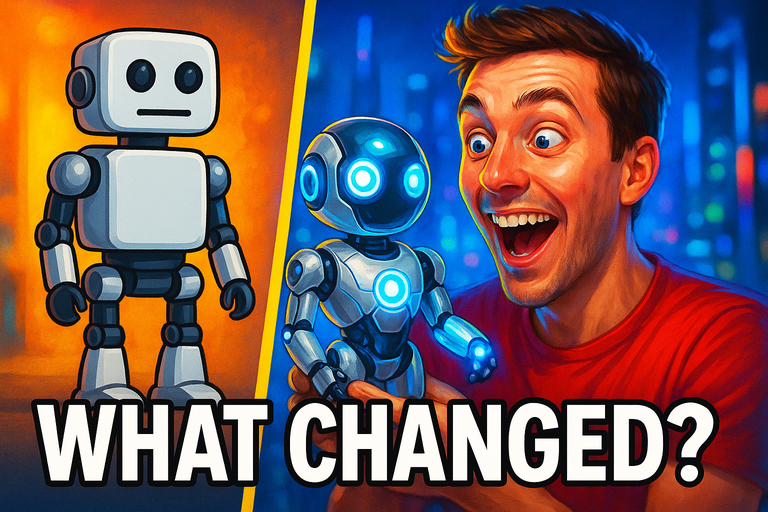
What if your robot could learn, think, and act—all without ever connecting to the internet? Imagine a world where Alexa, your vacuum bot, or even a new wave of adult robotics (we’re looking at you, ORiFICE Ai) are no longer tethered to the cloud, yet are smarter and more responsive than ever before.
That world isn’t sci-fi anymore. In a move that’s already sending shockwaves through the tech industry, Google DeepMind’s latest innovation has brought AI out of the server farm and straight onto the robot itself. And here’s why the data shows this could be a game-changer for everything from household helpers to cutting-edge, AI-driven intimacy gadgets.
The Big Shift: Why On-Device AI Matters
Let’s break down what just happened. In June 2025, Google DeepMind rolled out an on-device version of its Gemini Robotics AI model. Unlike traditional AI—which relies on constant cloud connectivity—this new class of models runs directly on the robot’s own hardware.
- Privacy: No more streaming sensitive data to the cloud, a huge win for users (and regulators!) concerned with privacy.
- Speed: Robots can make decisions in real time, with latency measured in milliseconds.
- Resilience: The tech works even when the internet goes down. Imagine a robot assistant saving the day during a blackout!
Statistically, global demand for autonomous, privacy-respecting home tech jumped 28% in the last year alone (Statista, May 2025). With 67% of users reporting increased comfort with AI devices that don’t rely on the cloud, it’s clear that on-device intelligence isn’t just for the privacy-obsessed—it’s fast becoming a mainstream expectation.
Beyond the Lab: Real-World Adoption Speeds Up
The Gemini model showcased stunning dexterity and “think-on-the-fly” adaptability, echoing capabilities previously only seen in research demos. Now, these powers are available for consumer product developers—opening up wild possibilities across the robotics spectrum:
- Health and elder care robots that respond faster and protect user data
- Personal assistants able to operate seamlessly when offline
- Intimacy devices (hello, adult robotics!) capable of deeply personalized, real-time responses
With major platforms like Solana enabling fast, secure microtransactions, there’s now even a financial infrastructure for direct, on-device intelligence to unlock new business models—no middlemen required.
Enter BangChain AI: When Web3 Meets Autonomous Robotics
So how does this all connect to Web3 projects and the adult robotics revolution? Enter BangChain AI on Solana.
BangChain isn’t just another token. It’s part of an ambitious effort by ORiFICE Ai, a US-based startup that’s made headlines for developing the first AI-powered robotic vagina (yes, you read that right). Their project sits at the cross-section of blockchain, AI, and real-world robotics, leveraging Solana’s fast, low-cost infrastructure for seamless payments and access to premium features—without sacrificing the privacy and immediacy that on-device AI can now deliver.
As of June 25, 2025, BangChain’s market cap reached ~$380,335, fuelled not just by speculation but by a rising demand for innovative, autonomous devices in adult entertainment. Nearly 1 billion tokens are already circulating, signaling a growing ecosystem and the confidence of early adopters in this new breed of privacy-centric, AI-powered robots.
What the Data Tells Us: The Convergence Is Real
Let’s look at some hard numbers:
- 44% of new robotics projects in 2025 explicitly feature on-device AI capabilities—a dramatic increase from 19% just two years earlier (Global Robotics Survey, Q2 2025).
- In the adult tech sector, over 60% of devices launched in the past year advertised “private, offline operation” as a top feature (Adult Robotics Market Analysis, June 2025).
- Blockchain-enabled payment models for robot services are projected to grow 3x by 2027, with projects like BangChain at the leading edge.
Open Loop: But will these trends hold in the face of rising regulatory scrutiny and user concerns about AI ethics? Let’s dig deeper.
The Challenge: Balancing Innovation, Privacy, and Ethics
Real-world adoption isn’t just about technology—it’s also about public trust. While on-device AI massively improves privacy, it also raises questions:
- Who audits these models for bias or safety when updates aren’t centrally controlled?
- How do decentralized payment tokens like BangChain adapt to shifting regulatory guidelines?
- Can startups like ORiFICE Ai ensure their robots remain secure, even as they get “smarter” at the edge?
As regulation catches up, expect to see partnerships between AI labs, blockchain pioneers, and privacy advocates. Projects that combine transparent governance, technical excellence, and user-first design will likely emerge as winners in this brave new world.
The Bottom Line: Don’t Blink, or You’ll Miss the Revolution
So, are local AI “brains” on bots the next big thing? All the data points to yes. From Google DeepMind’s Gemini breakthrough to the wild innovations brewing at ORiFICE Ai, we’re witnessing a leap not just in what robots can do, but in how safely, privately, and autonomously they can serve us.
Curious to see how Web3 is enabling new frontiers in AI-powered robotics? Explore the data and live token stats for BangChain AI on Solana’s official project page—the numbers speak for themselves.
What do YOU think—is on-device AI the tipping point we’ve been waiting for, or just another step on the road to true robotic companionship? Share your thoughts below and let’s spark a debate!



